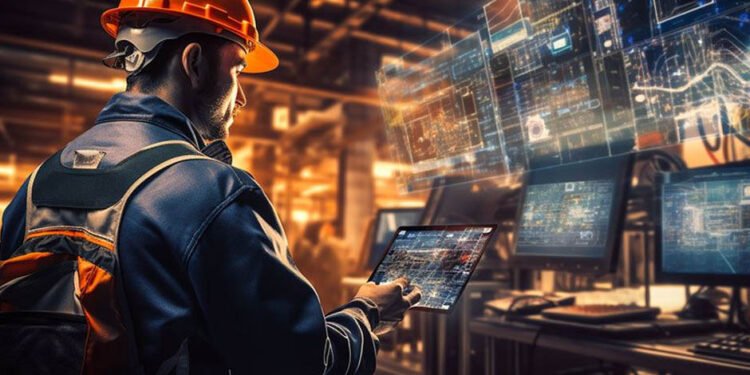Artificial intelligence is more than just a fancy term; it’s a real force in making workplaces safer and jobs more productive. It’s great for going through lots of information and spotting trends. This skill is changing how we look after our workers and make their jobs better.
This piece takes a closer look at the myriad ways AI is stepping up to the plate, not only to dodge potential mishaps but also to cultivate an environment where productivity thrives alongside safety.
The Role of AI in Workplace Safety
Predictive Analysis and Real-Time Monitoring
AI’s predictive capabilities are akin to giving safety managers a crystal ball. By sifting through historical data, AI can identify trends and anomalies that human analysts might miss.
For instance, it can pinpoint a piece of machinery that’s due for a malfunction long before it happens, or it can detect unusual patterns in employee behavior that suggest a risk of accidents.
Real-time monitoring takes this a step further by keeping a constant watch on the workplace. Cameras and sensors can track everything from the proper use of protective equipment to the correct execution of dangerous tasks, providing immediate feedback and alerts.
Training and Simulation
AI-powered simulations are transforming safety training from a passive to an active learning experience. Workers can be placed in virtual environments that mimic potential workplace dangers, from electrical hazards to mechanical failures. These simulations are not only safer and more cost-effective than traditional training methods but also more engaging, leading to better retention of safety protocols. Moreover, AI can tailor these training programs to individual learning styles, optimizing the educational experience.
Enhancing Communication
In the realm of safety, timely communication can mean the difference between a close call and a disaster. AI systems can automate the distribution of safety alerts, ensuring that all employees are aware of current risks and procedures. These systems can also facilitate two-way communication, allowing workers to report safety concerns easily and management to respond swiftly. The result is a more informed and responsive safety culture.
AI and Ergonomics
Ergonomics is about designing the workplace to fit the worker, and AI is proving to be an excellent designer. By analyzing data on workers’ movements and postures, AI can recommend changes to workstations, tools, and tasks that reduce physical strain. This proactive approach not only prevents injuries but also improves workers’ comfort and productivity.
Over time, AI can adapt these recommendations as it learns more about the workforce’s needs and the tasks at hand.
Incident Response and Management
When an accident occurs, the efficiency of the response can significantly impact the outcome. AI systems can be programmed to initiate emergency protocols, guiding workers to safety and ensuring that first responders are alerted immediately.
After the incident, AI can assist in the investigation, sifting through data to determine the cause and suggesting measures to prevent future occurrences. This continuous improvement cycle is vital for maintaining a safe workplace.
Equipment and Machinery Safety
AI’s vigilance extends to the tools and machinery that workers rely on. By monitoring equipment performance and predicting when maintenance is needed, AI can prevent dangerous breakdowns. It can also ensure that machinery is used safely, with systems in place to alert supervisors if an operator is engaging in unsafe practices or if a machine is operating outside of its normal parameters.
Environmental Monitoring
Certain work environments, such as chemical plants or construction sites, can pose significant risks due to fluctuating environmental conditions. AI excels in monitoring these environments, tracking everything from toxic gas levels to structural integrity. By providing real-time data on environmental conditions, AI helps ensure that workers are not exposed to unsafe working conditions and that any potential hazards are addressed promptly.
Integration of Advanced Safety Technologies
Bringing in sophisticated safety solutions into the daily grind is a nod to how smoothly AI can boost our safety efforts. These systems hum along in the background, tirelessly sorting through data, forecasting potential dangers, and offering up ways to get better. They might do their job without making a fuss, but their effect is deep, knitting safety into the day-to-day workflow in a way that feels natural and effortless. This is how technology like Protex AI can help improve safety in the workplace — by being a silent yet powerful guardian of the work environment.
Conclusion
Artificial intelligence is more than a productivity booster; it’s a steadfast sentinel for workplace safety. It’s reshaping our workdays, making sure that accidents become a rarity and efficiency is just part of the job. Embracing AI is like charting a course to a future where our work is not only effective but also inherently secure. Yes, it’s a complex path, but the goal is clear and compelling: a workplace where safety and smart innovation are in perfect harmony.












